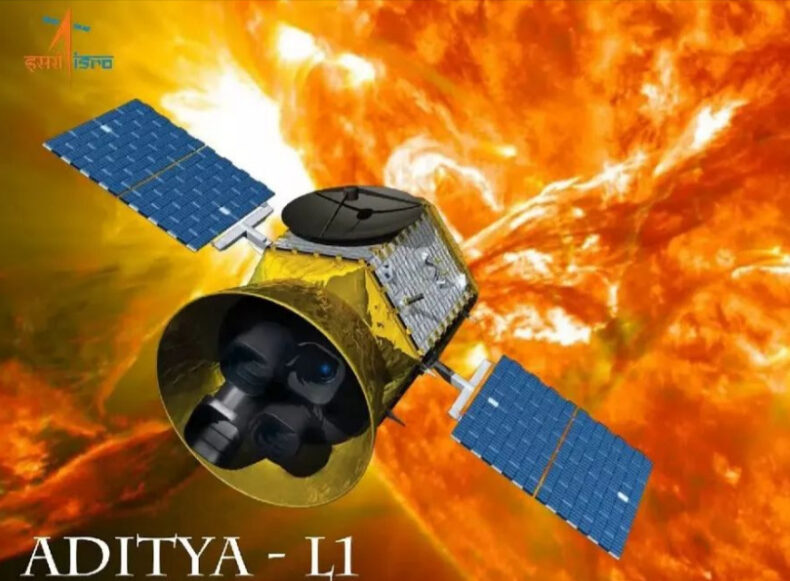As Aditya L1 gets ready to escape the force of gravity of the earth, India’s Aditya L1 solar satellite has started gathering information for science.
Table of Contents
Aditya L1
The acquisition of scientific data has started for Aditya L1, which is presently orbiting the planet, according to a Monday statement from the Indian Space Research Organization (ISRO).
With an operation planned for Tuesday at around 2 a.m., India’s first solar observatory in orbit will finally be free of the gravity of the earth’s surface. It will subsequently begin its four-month trip toward the earth-sun system’s Lagrange Point 1.
After its activation on September 10 at a distance of more than 50,000 km from Earth, the Supra Thermal and Energetic Particle Spectroscopy device, a part of the Aurora Sun Wind Particle Experiment payload, began gathering scientific information.
The space organization added that data gathering continued when the spacecraft proceeded more than 50,000 kilometers from Earth after conducting necessary instrument inspections.
The calculations are performed using low and high-energy particle spectroscopy instruments according to ISRO, who added that STEPS has been fitted with six detectors that each observe various angles and measure supra-thermal and energized ions between 20 keV/nucleon and 5 MeV/nucleon as well as electrons exceeding one MeV.
The data obtained during Earth’s travels around, according to the research agency, allows scientists to study particle activity near the planet, particularly when the magnetism of the planet is present.
As compared to Chandrayaan 3 which landed on the south pole of the Moon, the initial Lagrange orbital position in the earth-sun system will be where the Aditya-L1 probe will be positioned.
The probe will travel 15 lakh kilometers to the L1 point over the course of four months using an array of techniques, according to ISRO. In particular, this distance only makes up 1% of the 15 billion kilometers between Earth and our star.
Next Phase of the Aditya L1 Mission
The next phase of the mission involves the spacecraft leaving the gravity Area of Impact (SOI) of the earth as it moves nearer to L1. The transit phase will start after the SOI leaves, and the probe will then be placed into the enormous spiral orbit around L1. Aditya-L1’s total duration from takeoff to L1 is predicted to be approximately four months.
During its cruise stage and after the spacecraft enters its planned orbit, these STEPS observations will remain in effect. According to ISRO, data acquired at L1 will help shed light on the source, accelerated motions, and asymmetry of the solar breeze and space-related weather events.
Conclusion
Aditya L1 solar observatory is in the last stage before it sets its course towards the Earth-sun system’s Lagrange Point 1, and breaks free from our planet’s gravitational pull.
With the Supra Thermal and Energetic Particle Spectroscopy device already in action through its scientific data collection, this mission holds great promise.
Moreover, as the spacecraft embarks on its four-month journey, we are on the brink of unlocking crucial insights into solar phenomena and their impact on Earth. Also, the mission’s advanced instruments and its unique orbit position offer an unparalleled opportunity for scientific discovery.
Furthermore, in the future stages of this mission, we can anticipate a wealth of data that will deepen our understanding of the solar breeze, space-related weather events, and the workings of our radiant star.
Finally, the Aditya L1 Mission is a testament to India’s commitment to advancing scientific knowledge and exploring the wonders of our solar system.












